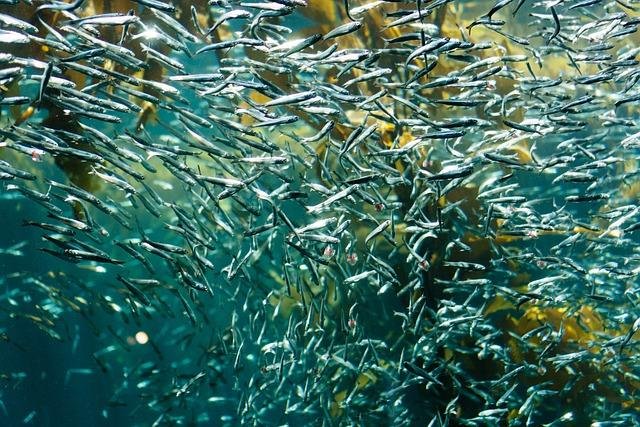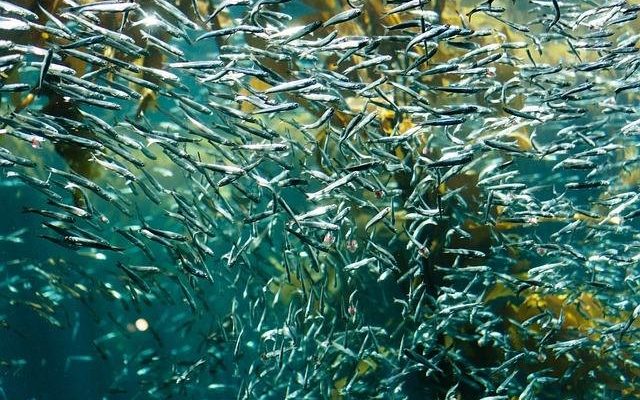
Sardines belong to the herring family, and they thrive in schools, which makes their feeding strategy quite interesting. Imagine a bustling cafeteria filled with kids — that’s what sardines do in the ocean, gathering in large groups to munch on their favorite foods. But what exactly do they eat, and how do they hunt? Understanding the diet and feeding habits of these fish gives us insight into their role in the marine food chain and ecological balance.
What Do Sardines Eat?
Sardines have a surprisingly diverse diet. Essentially, they are filter feeders, meaning they take in water and filter out their food. Their primary diet consists of microscopic organisms, but let’s get into specifics.
– Plankton: The majority of sardines feast on zooplankton and phytoplankton. Zooplankton are tiny drifting animals, while phytoplankton are microscopic plants. Sardines swim with their mouths open, filtering these nutritious snacks from the water.
– Small Crustaceans: Besides plankton, sardines also munch on small crustaceans like copepods and krill. These little critters pack a nutritional punch, giving sardines the energy they need to keep up their fast-moving lifestyle.
You might be wondering, why is this diet so important? Well, sardines are at the heart of the marine food web. Their eating habits not only support their own growth and reproduction but also provide energy for larger predators like tuna and seabirds.
How Sardines Feed: The Filter Feeding Process
Now, let’s look at how sardines actually go about their eating. It’s quite a fascinating process!
1. Swimming Patterns: Sardines often swim in large schools, creating a swirling mass in the water. This behavior not only helps them avoid predators but also makes it easier to find food.
2. Open Mouth Feeding: When sardines swim, they move with their mouths open. Their gills act like a sieve, allowing water to flow through while trapping food particles.
3. Digestive Efficiency: Once they filter the food, sardines have a highly efficient digestive system. They can extract nutrients quickly, which helps them maintain their rapid swimming speeds.
This filter feeding technique allows sardines to consume large amounts of food effortlessly, which is crucial for their survival and growth, especially in nutrient-rich waters.
Feeding Habits and Timing
Sardines also have specific feeding habits that are influenced by their environment. For instance, the time of day can play a huge role in when they eat.
– Dawn and Dusk Feeding: Sardines are known to feed during dawn and dusk when light levels change. During these times, their natural predators may be less active, giving them a safer window to eat.
– Tidal Influences: The ebb and flow of tidal patterns also affect their feeding behavior. When waters are turbulent, more plankton is brought to the surface, making it an ideal time for sardines to feast.
By following these patterns, sardines optimize their chances of finding food while minimizing the risk of becoming a meal for larger fish or predators.
Impact of Diet on Sardine Health
The diet of sardines has a direct impact on their overall health and reproductive success. Here’s how:
– Nutritional Value: Their diet rich in plankton and small crustaceans helps sardines develop quickly and reproduce effectively. This is crucial for maintaining their populations.
– Seasonal Variability: Depending on the season, the abundance of food can vary widely. During warmer months, when plankton blooms occur, sardines can grow more rapidly and sustain larger schools.
– Ecosystem Role: Because they consume such a wide range of food, sardines help control plankton populations, ensuring that the ecosystem remains balanced. This is vital for maintaining the health of the ocean environment.
Healthy sardine populations signify a thriving ecosystem, illustrating the interconnectedness of marine life.
How Do Sardines Contribute to Human Diets?
Interestingly, sardines aren’t just important in the ocean; they also play a significant role in human diets around the world. Here’s how:
– Nutritional Powerhouses: Sardines are rich in omega-3 fatty acids, protein, and essential vitamins. Eating sardines can provide health benefits such as improving heart health and supporting brain function.
– Sustainable Seafood Choice: Sardines are typically fished sustainably, making them an environmentally friendly option for seafood lovers. Their abundant populations mean they can be harvested without harming the ecosystem.
– Culinary Versatility: Whether canned, grilled, or added to salads, sardines are a versatile ingredient in many cuisines. Their strong flavor enhances a variety of dishes, from Mediterranean specialties to simple pasta meals.
So, the next time you crack open a can of sardines, remember that these little fish offer both culinary delight and nutritional value while contributing to the health of our oceans.
Conservation and Future of Sardines
As with many fish populations, sardines face challenges due to overfishing and environmental changes. Here’s what’s happening:
– Overfishing Concerns: Many sardine species are heavily fished for human consumption. If not managed properly, this can lead to a decline in their populations, disrupting the ocean ecosystem.
– Climate Change Effects: Changes in ocean temperatures and currents can impact sardine populations and their food sources. Warmer waters may alter plankton distributions, affecting sardines’ access to food.
– Sustainable Practices: To safeguard sardine populations, many countries are implementing sustainable fishing practices and regulations. This helps ensure that future generations will enjoy both sardines and the richness of marine life.
Understanding the diet and feeding habits of sardines not only illustrates their importance in marine ecosystems but also emphasizes our duty to protect these fish and the waters they inhabit.
Sardines might be small, but their impact is huge. From their diet of plankton and small crustaceans to their role in the ocean’s ecosystem and human diets, these little fish play a vital role in maintaining balance in marine life. As we look to the future, it’s important to prioritize sustainable practices to ensure sardines can thrive for generations to come. So next time you enjoy a meal featuring sardines, appreciate the journey of these fish from ocean to table and their invaluable contribution to our world.

